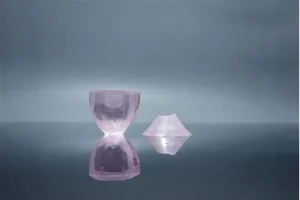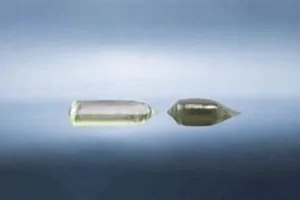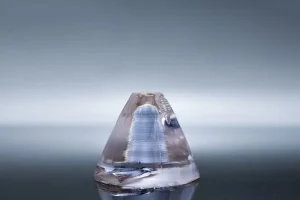Introduction
When it comes to laser technology, the debate often boils down to two major contenders: Erbium: Yttrium Aluminum Garnet (Er:YAG) and Holmium: Yttrium Aluminum Garnet (Ho:YAG). Both crystals play pivotal roles in the laser industry, from medical procedures to industrial applications, each having unique properties and advantages. This article aims to dissect the intricacies of these two laser crystals, presenting an unbiased comparison that will guide decision-makers and enthusiasts alike.
Comparing Er:YAG and Ho:YAG Properties
When pitting the properties of Er:YAG against Ho:YAG, the crucial determinant is the absorption coefficient. The Er:YAG’s higher absorption in water provides it with superior control, ideal for high precision applications. On the other hand, Ho:YAG’s lower absorption allows it to penetrate deeper, making it suitable for specific medical procedures.
In-depth Look at Er:YAG and Ho:YAG: Wavelengths, Energy Levels, and Tissue Interactions
When discussing lasers in medical and aesthetic applications, the concept of emission wavelengths is paramount. This figure determines how the laser interacts with various tissues and materials, influencing both its application and effectiveness.
Emission Wavelength of Er:YAG
The Er:YAG laser emits light at a wavelength of 2940 nm, placing it in the mid-infrared section of the spectrum. This specific wavelength has unique interactions with biological tissues, most notably with water.
The human body, as well as many biological tissues, consists predominantly of water, and it is no coincidence that the 2940 nm wavelength corresponds to a peak in the absorption spectrum of water. This peak is linked to the vibrational frequency of the water molecule, which means that when light at this frequency strikes a water molecule, the energy is rapidly absorbed, causing the molecule to vibrate more energetically.
This energetic vibration manifests as heat, meaning that Er:YAG lasers can rapidly heat tissues in a very controlled manner. Because the heating is so localized, this allows for precision ablation of tissues with minimal collateral thermal damage, making it the laser of choice for delicate procedures in dermatology and dentistry.
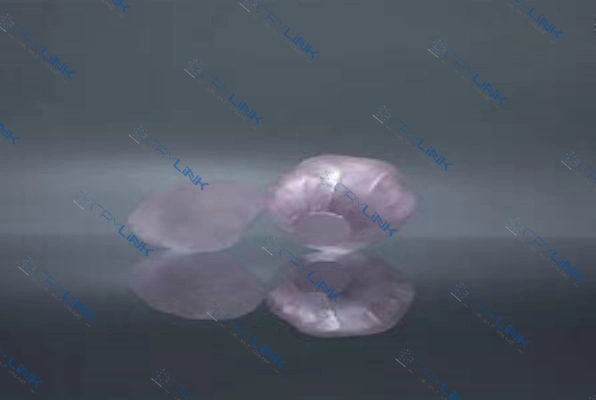
Emission Wavelength of Ho:YAG
The Ho:YAG laser, in contrast, operates at a wavelength of 2100 nm. This longer wavelength is less efficiently absorbed by water and biological tissues, resulting in a different profile of tissue interaction.
Lower absorption allows the laser light to penetrate deeper into tissues before it is absorbed and converted into heat. This depth of penetration can be harnessed for certain applications where a more extensive tissue effect is desired.
Furthermore, the lower absorption also means a broader distribution of the laser’s energy, leading to a more diffused heating effect. This is particularly beneficial in procedures like lithotripsy, where the goal is to fragment kidney stones, or in certain orthopedic procedures where a larger volume of tissue needs to be affected.
However, the trade-off for this broader, deeper impact is a loss of the precise control that characterizes Er:YAG lasers. This makes Ho:YAG less suitable for procedures that require the extreme precision offered by the Er:YAG laser.
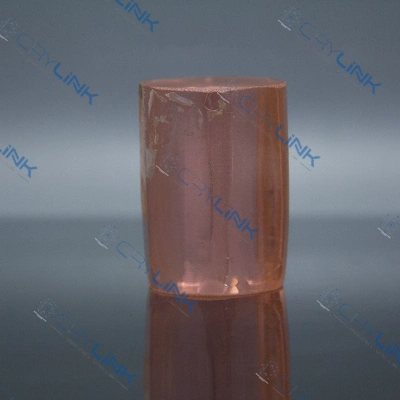
Energy Levels: A Deeper Examination
The energy levels of Erbium-doped Yttrium Aluminum Garnet (Er:YAG) and Holmium-doped Yttrium Aluminum Garnet (Ho:YAG) crystals not only influence the operation and functionality of the lasers but also impact their longevity and effectiveness in various applications.
Energy Levels of Er:YAG
Er:YAG lasers have a high quantum efficiency, which is the proportion of absorbed photons that result in stimulated emission, leading to lasing action. High quantum efficiency implies a higher rate of conversion of input energy into laser light, which means the Er:YAG laser can generate a powerful output with less energy input. This efficient energy conversion is advantageous as it reduces unnecessary heat generation and minimizes energy waste.
Moreover, Er:YAG has superior thermal conductivity. In laser operations, heat is an inevitable by-product, and managing this heat is crucial. High thermal conductivity in Er:YAG means that generated heat can be quickly and efficiently dissipated, reducing the risk of overheating and potential damage to the laser crystal.
This excellent heat management is a critical attribute for applications requiring extended or high-intensity laser operation, such as laser resurfacing in dermatology, as it ensures the longevity of the laser and reduces the risk of thermal damage to tissues.
Energy Levels of Ho:YAG
Contrary to Er:YAG, Ho:YAG lasers possess lower quantum efficiency. This means a lesser proportion of absorbed photons result in stimulated emission, leading to lasing action. Thus, Ho:YAG lasers need a higher input energy to produce the same level of laser output as an Er:YAG laser.
However, Ho:YAG crystals exhibit excellent thermal properties, including high thermal conductivity and a high damage threshold. These properties mean that even though Ho:YAG lasers may generate more heat, they are incredibly resistant to thermal damage and capable of efficiently dissipating the heat generated during laser operation.
This ability to withstand high temperatures and the efficiency of continuous wave operation makes Ho:YAG lasers particularly well suited for procedures that require constant, robust laser operation, such as lithotripsy in urology or certain orthopedic procedures.
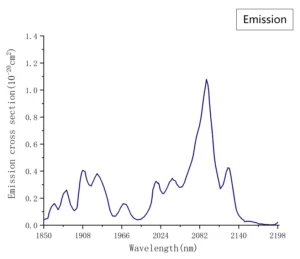
Tissue Interaction Characteristics: An In-depth Exploration
The interaction between lasers and tissue is central to their effectiveness in a multitude of medical and aesthetic procedures. The tissue interaction characteristics of Erbium-doped Yttrium Aluminum Garnet (Er:YAG) and Holmium-doped Yttrium Aluminum Garnet (Ho:YAG) crystals present unique advantages in different applications.
Tissue Interaction Characteristics of Er:YAG
Er:YAG lasers, with their 2940 nm emission wavelength, have a high absorption rate in water, which is abundant in biological tissues. This high absorption results in a short penetration depth, causing an extremely precise and superficial interaction with tissues.
This precise interaction means that the effects of Er:YAG lasers are highly localized, predominantly affecting only the targeted area with minimal impact on surrounding tissues. This accuracy allows practitioners to perform delicate procedures with high precision, minimizing the risk of collateral damage and facilitating faster recovery times for patients.
For instance, in dermatology, Er:YAG lasers’ precision makes them ideal for skin resurfacing procedures, where the aim is to remove only the outer layers of skin without causing undue damage to the underlying tissues. In dentistry, the precision of Er:YAG lasers makes them particularly useful for fine procedures such as cavity preparation or gum contouring, where the goal is to minimize trauma to surrounding structures.
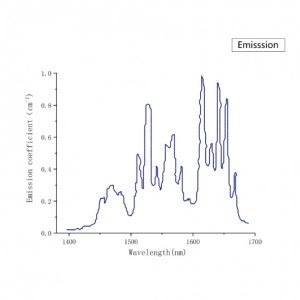
Tissue Interaction Characteristics of Ho:YAG
Ho:YAG lasers, conversely, operate at a longer wavelength of 2100 nm, which has a lower absorption rate in water and thus biological tissues. This lower absorption allows the laser light to penetrate deeper into tissues before being absorbed.
As a result, the energy of Ho:YAG lasers is distributed over a larger volume of tissue, causing a broader and deeper effect. This broad effect, while not as precise as the Er:YAG lasers, is incredibly useful for procedures where a wider area of impact is desirable.
In lithotripsy, for instance, the objective is to fragment kidney or bladder stones, and the deep penetration and broad impact of the Ho:YAG laser help achieve this without damaging the surrounding tissues. Similarly, in orthopedic surgeries, the Ho:YAG laser’s broader impact is beneficial for procedures such as joint arthroscopy or spinal surgery, where a larger volume of tissue needs to be affected.
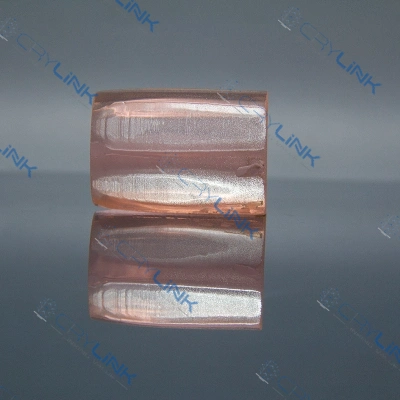
Key Considerations for Selecting Er:YAG and Ho:YAG in Dental Treatments and Dermatology
Choosing between Erbium-doped Yttrium Aluminum Garnet (Er:YAG) and Holmium-doped Yttrium Aluminum Garnet (Ho:YAG) for specific procedures such as dental treatments and dermatology involves evaluating their unique properties and capabilities. The following sections explore the key considerations for making an informed decision.
Properties and Interactions
Er:YAG
Er:YAG operates at a wavelength of 2940 nm, which is highly absorbed by water, a major component of biological tissues. It provides precise control with minimal thermal spread, making it an excellent choice for procedures requiring high precision and minimal damage to surrounding tissues.
Ho:YAG
Ho:YAG operates at a wavelength of 2100 nm. The lower absorption coefficient allows deeper tissue penetration but also means a greater spread of thermal effects, making it less ideal for procedures requiring pinpoint precision.
Considerations for Dental Treatments
In the realm of dentistry, procedures range from delicate periodontal treatment to more substantial hard tissue work such as cavity preparation.
Er:YAG in Dentistry
Er:YAG’s superior precision and minimal collateral damage make it highly suitable for dental procedures. It’s especially beneficial in delicate procedures like periodontal treatment, where minimal invasiveness and precise control are vital.
Ho:YAG in Dentistry
Though Ho:YAG’s deeper penetration can be beneficial in specific contexts, the associated wider thermal spread makes it less optimal for precise dental work, where the risk of damage to surrounding structures can have significant consequences.
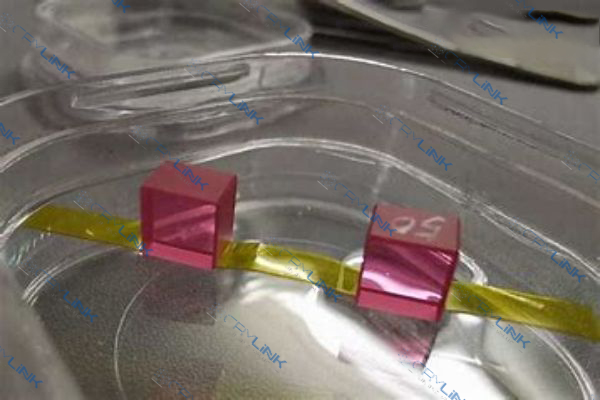
Considerations for Dermatology
Laser procedures in dermatology vary from superficial treatments like skin resurfacing to more invasive treatments such as tumor removal or deep scar treatment.
Er:YAG in Dermatology
In dermatology, Er:YAG is the go-to laser for skin resurfacing due to its high precision and controlled ablation of skin layers. It minimizes thermal damage to underlying tissues, reducing healing time and potential complications.
Ho:YAG in Dermatology
The use of Ho:YAG in dermatology is less common due to its deeper penetration and broader thermal effects. However, in certain cases, such as deeper dermal lesions or when deeper thermal effects are desired, Ho:YAG may be considered.
Conclusion
In the showdown between Er:YAG and HO:YAG, it becomes clear that both laser crystals have unique strengths and applications. While Er:YAG shines in high precision procedures due to its higher absorption coefficient and high efficiency, HO:YAG excels in areas requiring deeper penetration and continuous wave operation.
Each crystal has its own niche, and the choice between them should be based on the specific requirements of the application at hand. By understanding these crystals’ unique properties and advantages, we can harness their potential to optimize and innovate across industries.
Frequently Asked Questions
- 1. What makes Er:YAG ideal for skin resurfacing and dental procedures?
- Er:YAG is ideal for these procedures due to its high absorption in water, which provides better control and limits the depth of penetration, reducing the risk of collateral damage.
- 2. What is the advantage of HO:YAG in lithotripsy procedures?
- The lower absorption coefficient of HO:YAG allows for deeper penetration, making it highly effective for lithotripsy procedures, where such penetration is beneficial.
- 3. How does the operational efficiency of Er:YAG and HO:YAG differ?
- Er:YAG is highly efficient due to its exceptional thermal properties and high quantum efficiency, reducing the required pump power. HO:YAG, despite its lower quantum efficiency, performs outstandingly in continuous wave operation due to its excellent thermal properties.
- 4. Which laser crystal is more energy-efficient?
- Er:YAG is generally more energy-efficient due to its higher quantum efficiency, which reduces the required pump power.
- 5. Is HO:YAG or Er:YAG better?
- The choice between HO:YAG and Er:YAG largely depends on the specific requirements of the application. Er:YAG is ideal for high precision procedures, while HO:YAG excels in areas requiring deeper penetration and continuous wave operation.


